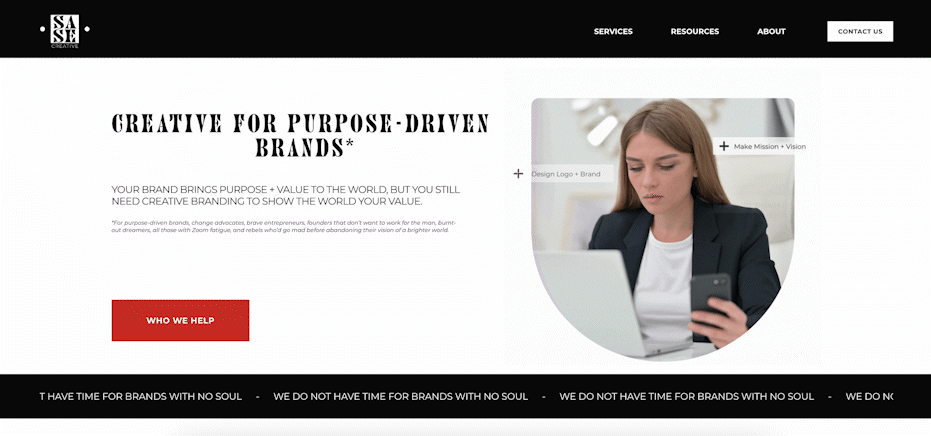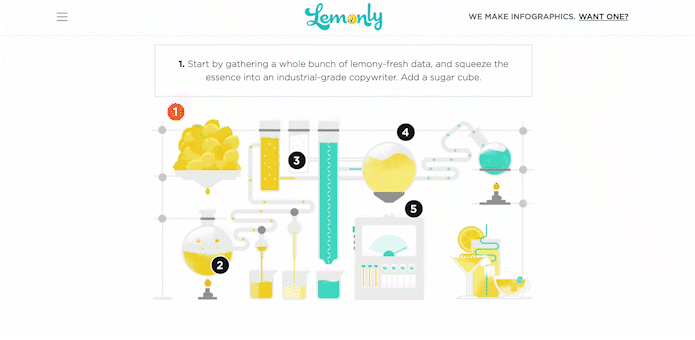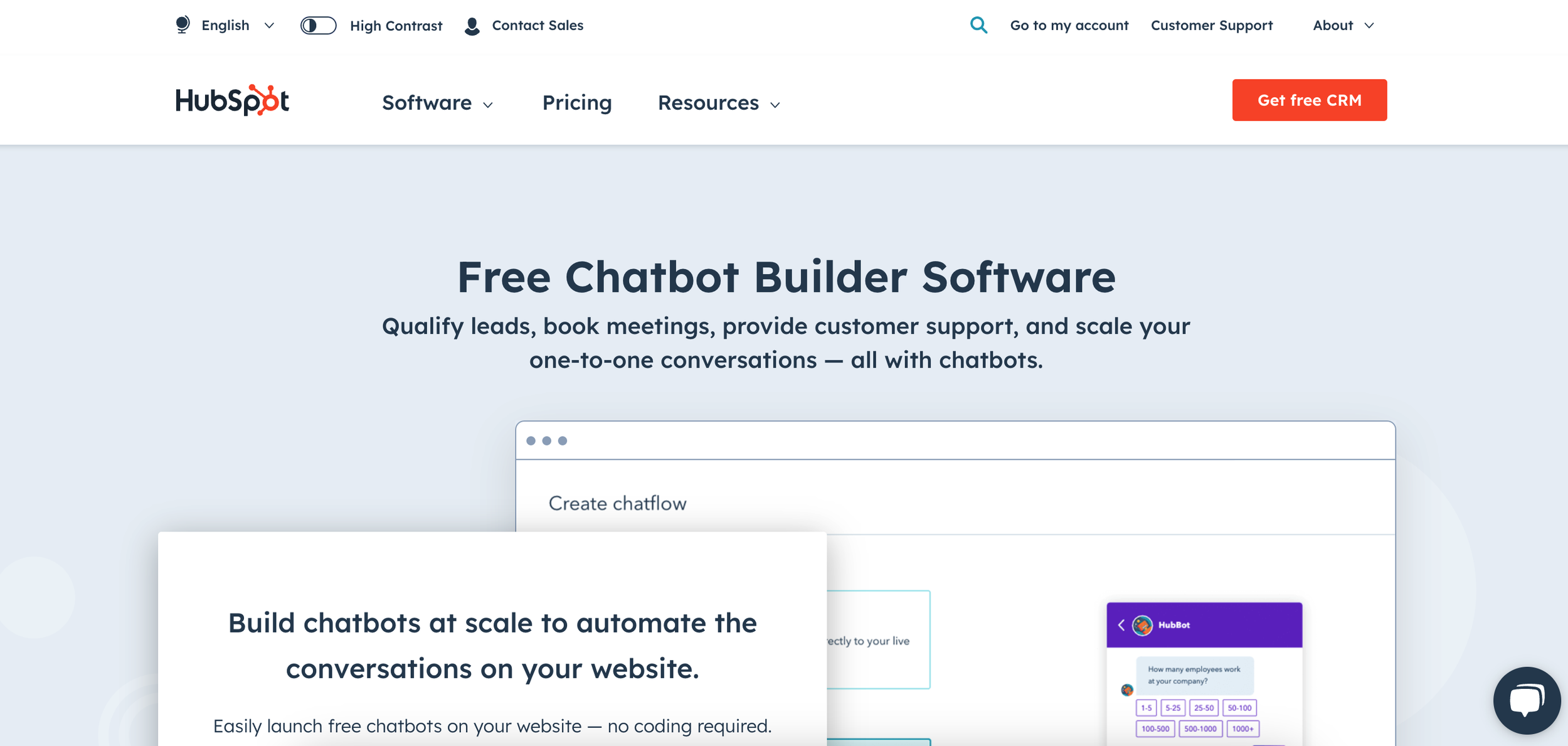How to Use Interactive Design Elements on Your Website
It’s crucial for businesses to have an online presence, and a well-designed website is the first step. However, having an attractive website alone is not enough. You have to engage web visitors and keep them coming back to your site.
Research from Microsoft found that the human attention space has dropped to 7 seconds – a shrink of nearly 25% in the last few years. For brands and content creators, this means that we have less time to capture attention.
Research from Microsoft found that the human attention space has dropped nearly 25% in the last 20 years.
Brands must look at ways to better educate and inform their target audience on their website. One of the best ways to do this is by incorporating interactive design elements into the website.
What are interactive design elements?
Interactive design elements refer to design elements that encourage user engagement and participation with a website or application. These elements can be anything from buttons that change color or shape when hovered over, to quizzes, games, interactive infographics, videos, and chatbots.
Interactive design elements can improve user engagement and retention by making the experience more enjoyable, memorable, and personal. These elements can provide instant feedback, encourage exploration, and create a sense of achievement, making the user more likely to stay on the site, revisit it, and share it with others.
Designers use a variety of tools and techniques to create them, including HTML, CSS, JavaScript, and other programming languages. This means interactive content costs more because you typically must work with a designer and developer. Plus it takes strategy and critical thinking to development engaging interactive content.
But don’t let this discourage you — interactive graphics are a great marketing investment that helps bring in new leads. The goal is to create a user experience that is intuitive, fun, and engaging, and that encourages the user to take specific actions or achieve specific goals.
5 Reasons to Use Interactive Design Elements
Interactive design elements have become increasingly popular in marketing, as they can be effective at capturing and retaining consumers' attention. Here are some key reasons to add some interactive design to your marketing:
Increases engagement: Interactive design elements such as quizzes, polls, and interactive infographics have been found to increase engagement with marketing content. These kinds of content are more entertaining so web visitors spend more time, which helps engagement data increase.
Boosts conversions: Interactive design elements can also be effective at increasing conversion rates. Many companies use quizzes and calculators to get visitors to fill out forms on their websites.
Enhances brand recognition: Interactive design elements can be effective at enhancing brand recognition. Your audience will remember your calculator, quiz, or interactive content because it stands out from the competition.
Improves customer satisfaction: Interactive design elements can also improve customer satisfaction. Customers who have a positive experience with interactive marketing content are more likely to purchase from the company again in the future.
Provides valuable data: Interactive design elements can also provide valuable data to marketers. For example, interactive quizzes and surveys can help marketers to better understand their target audience and tailor their marketing efforts accordingly.
Overall, research shows interactive design elements can be highly effective in marketing, helping to increase engagement, conversions, brand recall, customer satisfaction, and the collection of valuable data. But effectively using interactive design requires a careful balance between interactivity, usability, and relevance to the target audience to ensure that the design is both engaging and effective.
Next, we will discuss how to use interactive design elements in your website for better engagement.
Use Animation and Micro-Interactions
Animation and micro-interactions are small design elements that add life to a website. They are designed to respond to user actions and provide instant feedback, making the user experience more enjoyable.
For instance, when a user hovers over a button, it can change color or shape, indicating that it's clickable. Similarly, when a user fills out a form, the form can shake, indicating that something is incomplete. These small elements keep the user engaged and add a touch of fun to the overall experience.
I use animations on the homepage of SASE Creative. I like the way it captures your attention right away while playing with the actual content.
Gamification + interactive QUIZZES
Gamification is the process of incorporating game elements into non-game contexts. It is a fun way to keep the user engaged and motivated. For instance, you can incorporate a quiz, a calculator, a trivia game, or a spin-the-wheel game that offers discounts or other prizes. These games create a sense of achievement and encourage the user to keep playing, leading to better engagement and higher conversions.
I recommend using Typeform because it’s user-friendly, plus they have all kinds of interactive lead magnets already built out. It may be cheaper in the long run to hire a developer to create a similar quiz, but for small businesses who need to get a quiz or calculator up quickly, Typeform is probably your best option.
If you’re interested in creating interactive quizzes, check out TypeForm. This is a great way to create an interactive lead magnet.
Create Interactive Infographics + Presentations
Infographics are a popular way to present complex information in a simple and attractive way. Adding interactivity to infographics can take them to the next level and really wow your audience.
Interactive infographics allow users to interact with the data, zoom in on specific areas, or explore different options, making them more engaging and memorable. Companies are also creating interactive white papers, ebooks, guides, and more.
Here are some tools and softwares to use to create interactive infographics:
Lemonly is a great place to find inspiration for interactive content, and they also help you create your own interactive content. Check them out!
Add Interactive Videos
Videos are an excellent way to engage users and deliver a message quickly. Now, you can also add interactive elements to videos to allow users to dive deeper into your brand after watching one of your videos.
For instance, you could add hotspots that users can click on to learn more about a particular topic. You could also add branching videos that allow users to choose their own path, making the experience more personalized and engaging.
Vimeo recently released new features to make videos interactive. You can add buttons to let users buy a product after they watch a video. Even if you don’t have a budget for interactive videos, you can still optimize YouTube videos to increase video subscribers or get videos to watch another video of yours.
Vimeo has recently released new option to make videos interactive. You can add buttons to let users buy a product after they watch a video.
Incorporate Chatbots
Chatbots are artificial intelligence-powered software that can converse with your web visitors. They can answer common questions, provide assistance, and guide the user through your website. Incorporating chatbots into your website can improve the user experience, increase engagement, and reduce the workload of your customer service team.
There are a ton of tools out there offering chat services on websites. HubSpot’s chatbot-building tool is free to use and makes it super easy to set up chatbots.
HubSpot’s chatbot building tool is free to use and makes it super easy to set up chatbots.
Using interactive design elements in your website is a great way to improve engagement and keep visitors on your site longer. By using animation, micro-interactions, gamification, interactive infographics, interactive videos, and chatbots, you can make your website stand out to visitors. Check out these options and create an interactive website that will keep your visitors coming back for more.
Is your website failing to attract new leads? You can build a website that attracts your target audience. Use our free website planning workbook to strategize how to build a website that works as a sales engine for you.
Interested in working with us to create an interactive graphic or piece of content? Contact us today to get started on your next interactive design project.







